Taking on a derelict building is not for the faint hearted. Let alone a building partially concealed by six metres of brambles and a completely overgrown plot crammed with walnut, maple and oak trees.
“There was a willow tree growing out of the back of the building that had caused some problems,” recalls Jenny, who along with her husband John bought the Victorian church in rural Suffolk in 1994 and began work on the garden in 2008. With incredible resourcefulness and John’s apparent ability to design and build almost anything (he was a carpenter before retiring), the couple have transformed this neo-Norman church, and turned its surrounding two thirds of an acre into an immaculate formal garden.
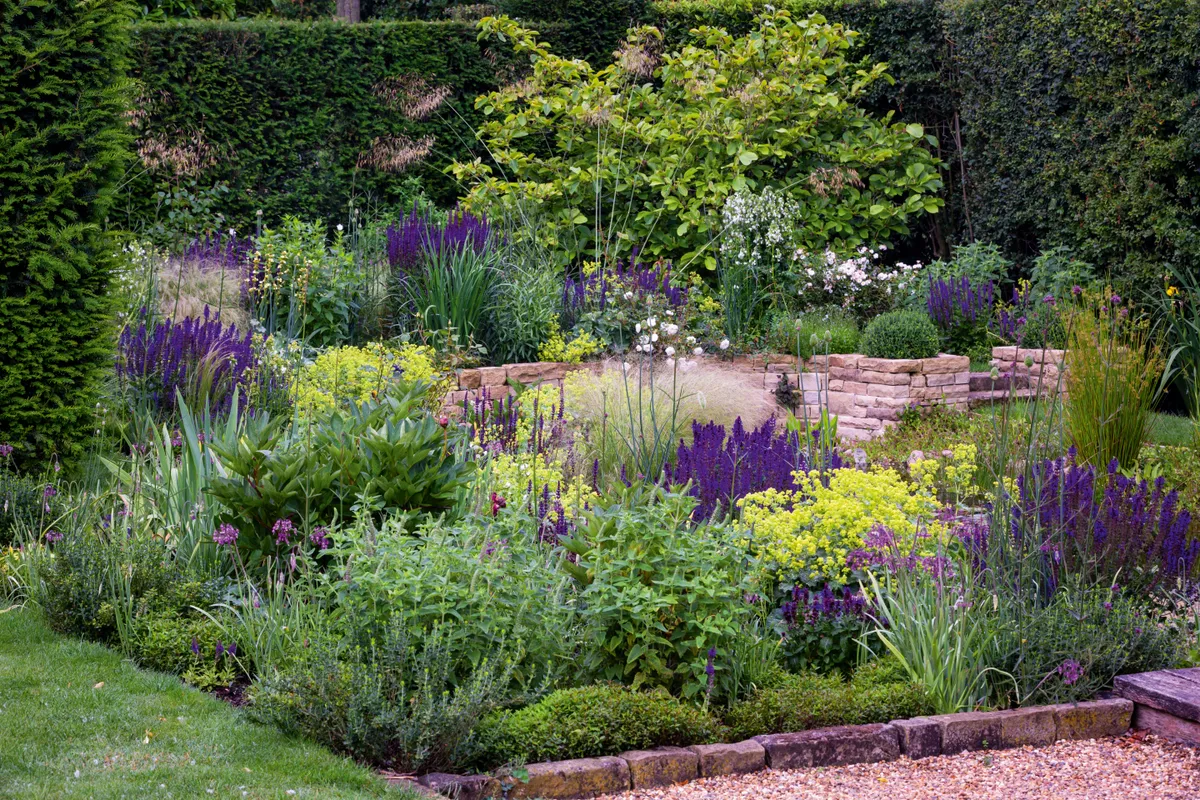
IN BRIEF
What A largely formal garden of rooms contrasted with romantic planting. Where Suffolk.
Size Two thirds of an acre.
Soil Clay improved with topsoil.
Climate Temperate and fairly low rainfall.
Hardiness zone USDA 9a.
An Arts and Crafts mood ripples throughout – and chimes perfectly with the Victorian church. Ideas were cherry picked from visits to gardens of that era, such as Hidcote, and details such as the topiary peacocks on top of yew columns are a whimsical nod to the period. But it’s the very spirit of the movement that's also felt in the whole fabric of the house and garden.
One of the couple’s triumphs is to make the garden feel as though it totally belongs to the church – and vice versa. Elements from the church have also been incorporated into the garden – the original font is now set in a small semi-circular bed with standard roses. Nearby, an imposing stone cross, surrounded by a low box hedge, greets visitors to the property. Jenny and John are rightly proud of what they’ve achieved here – and their achievement is all the more remarkable for having done it all themselves.
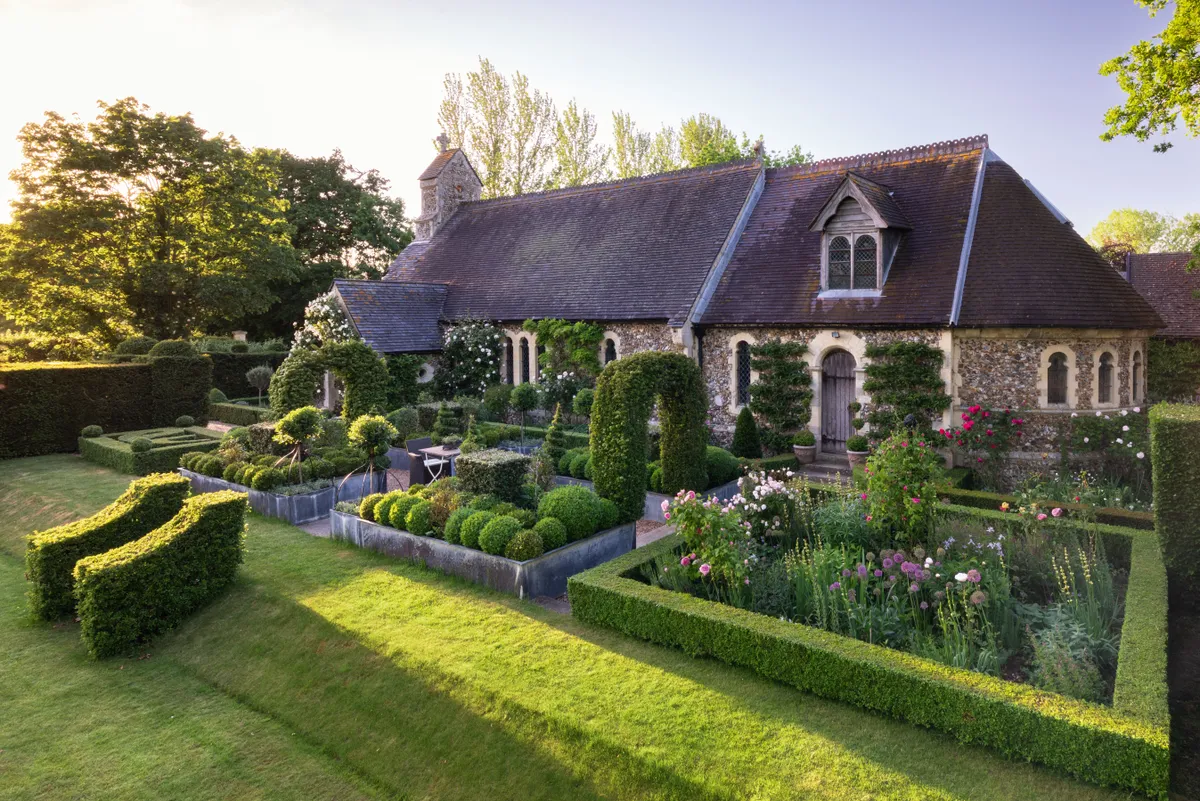
The front of the house is punctuated with vast boxes full of John’s precise topiary forms including box balls and spirals and cubes of Berberis darwinii. The planters have open bottoms so they don’t dry out too quickly.
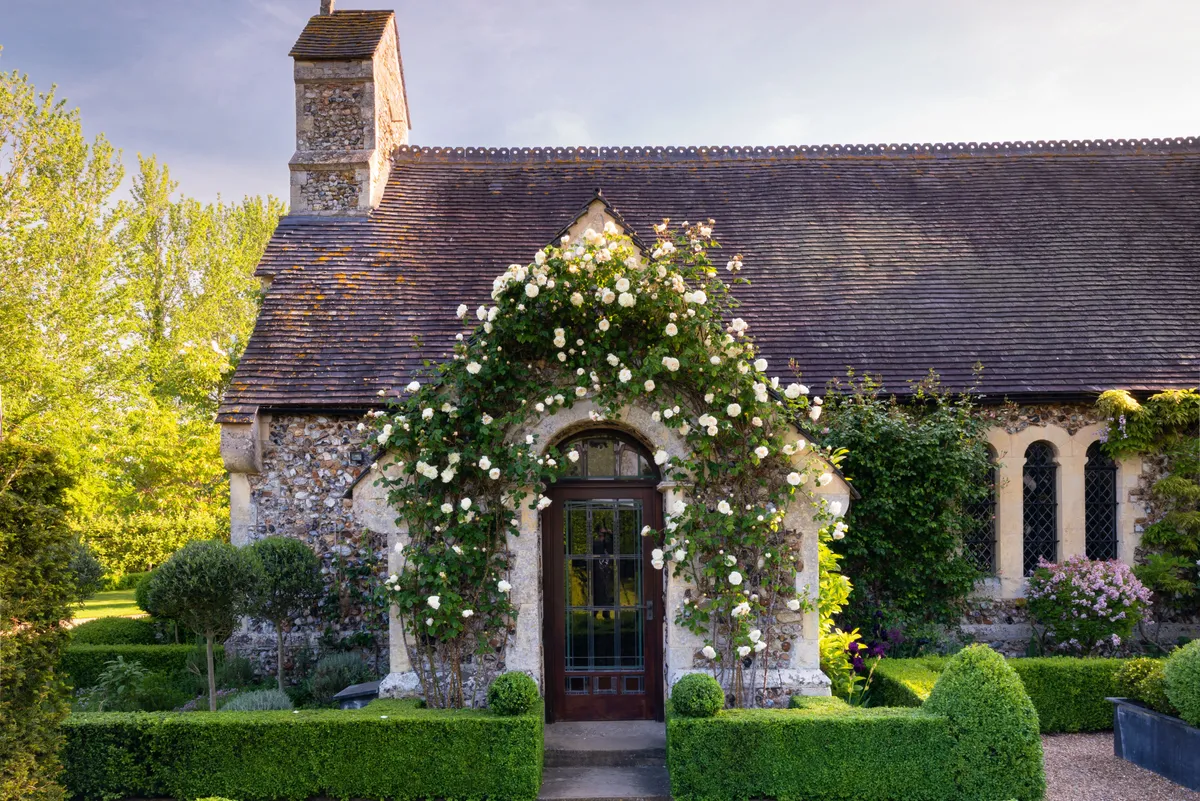
The pretty gabled entrance is framed by Rosa ‘Sombreuil’, a climbing tea rose introduced in France in 1850 that grows to 4.5m. Its off-white blooms appear almost continuously throughout summer.

The entrance to the property echoes the crisp formality of the whole garden. John designed and built the large York-stone water feature. Originally, the plan was to grow edibles but it has been turned over to topiary and perennials.

Across the lawn from John and Jenny’s home, a renovated neo-Norman church built in the mid 19th century, is a neat summerhouse overlooking one of three ponds. Like almost everything else in the garden it was designed and built by John.
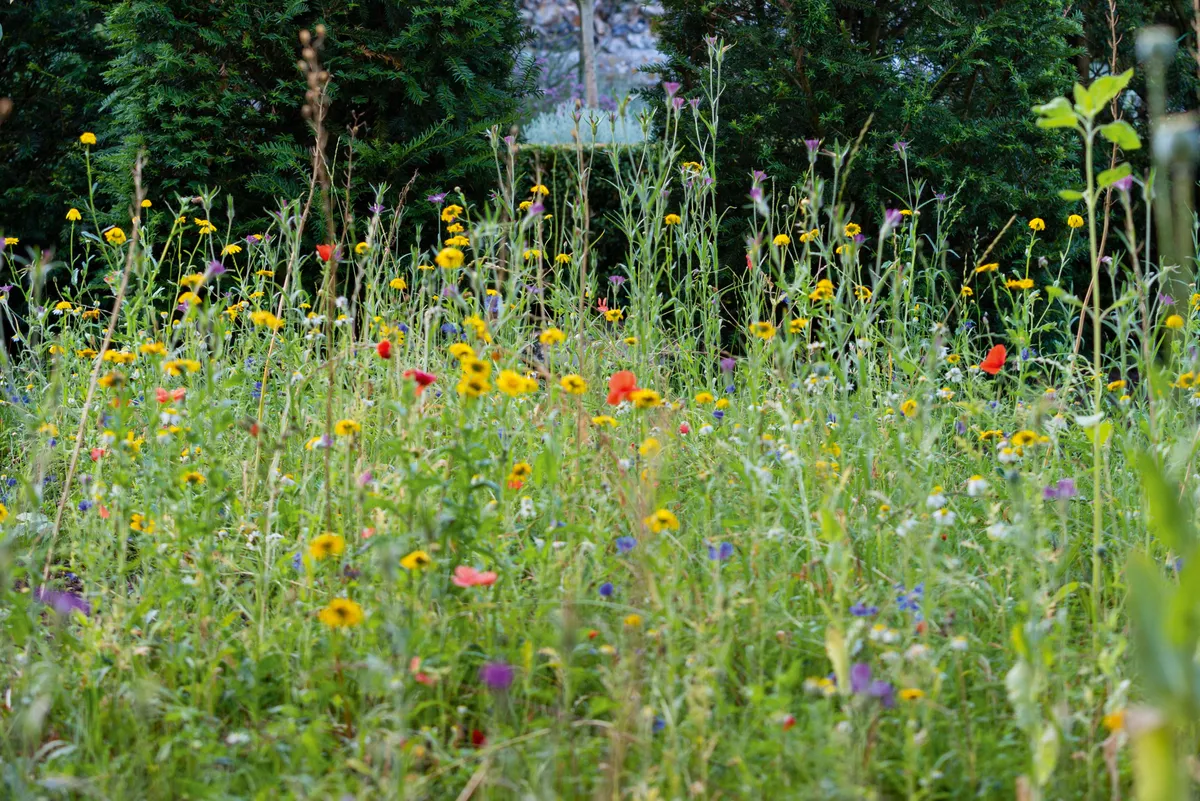
The pretty midsummer meadow, which replaced an area of lawn that didn’t thrive, is the newest addition to the garden. It is punctuated with views of the tall yew hedges that surround the main garden.

Frothy borders, filled with lady’s mantle Alchemilla mollis, Salvia nemorosa ‘Caradonna’ and campanulas among a mix of grasses, including Stipa gigantea and Stipa tenuissima, provide the perfect counterpoint to the dark yew hedges.
Key plants in Jenny and John's garden
Rosa Tradescant (= ‘Ausdir’)

A repeat-flowering shrub rose, with arching branches, that can also be grown as a short climber up to 2.4m. Its deep-crimson blooms have a strong, old-rose scent and healthy foliage. 1.8m x 1.5m.
Iris ‘Picador’

This strong-growing bearded iris was introduced by Benjamin Yoe Morrison in around 1930. Jenny’s came from an iris found growing in her grandfather’s garden in Kent, which remained unidentified for many years. 1.2m.
Sisyrinchium striatum
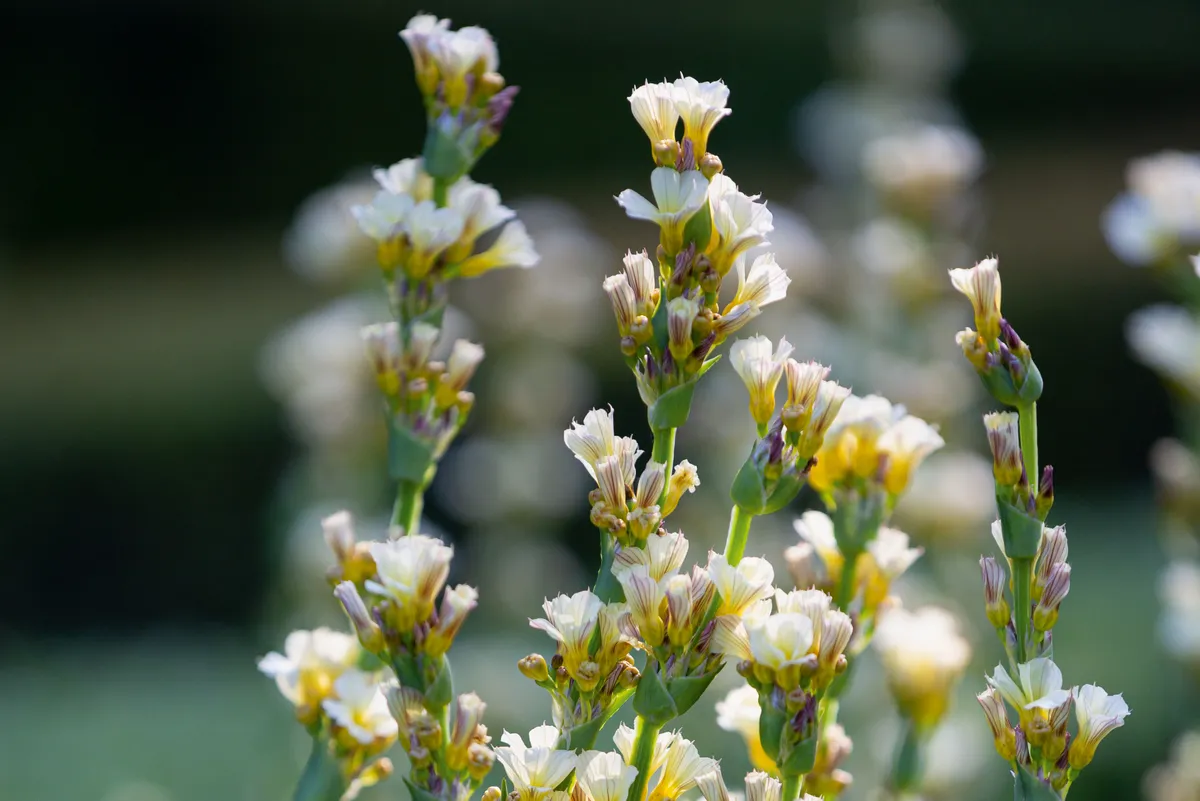
Clump-forming perennial with vertical stems that carry clusters of pale-yellow flowers and fans of lance-shaped leaves. Will re-flower if deadheaded and readily self-seeds. 60cm x 25cm.
Lupinus ‘Gallery Blue’
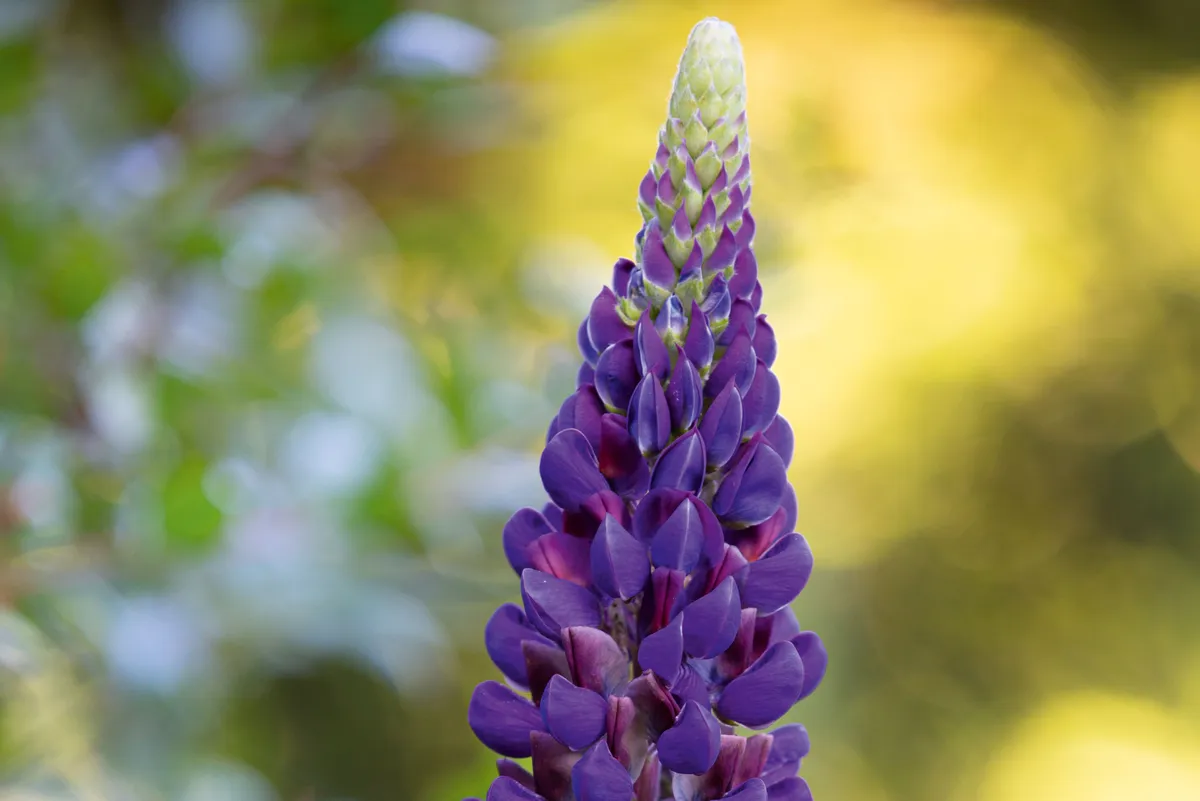
In midsummer, deep-indigo spires are held above palmate leaves. It will repeat flower if the spikes are cut back. 50cm x 30cm.
Rosa Wenlock (= ‘Auswen’)
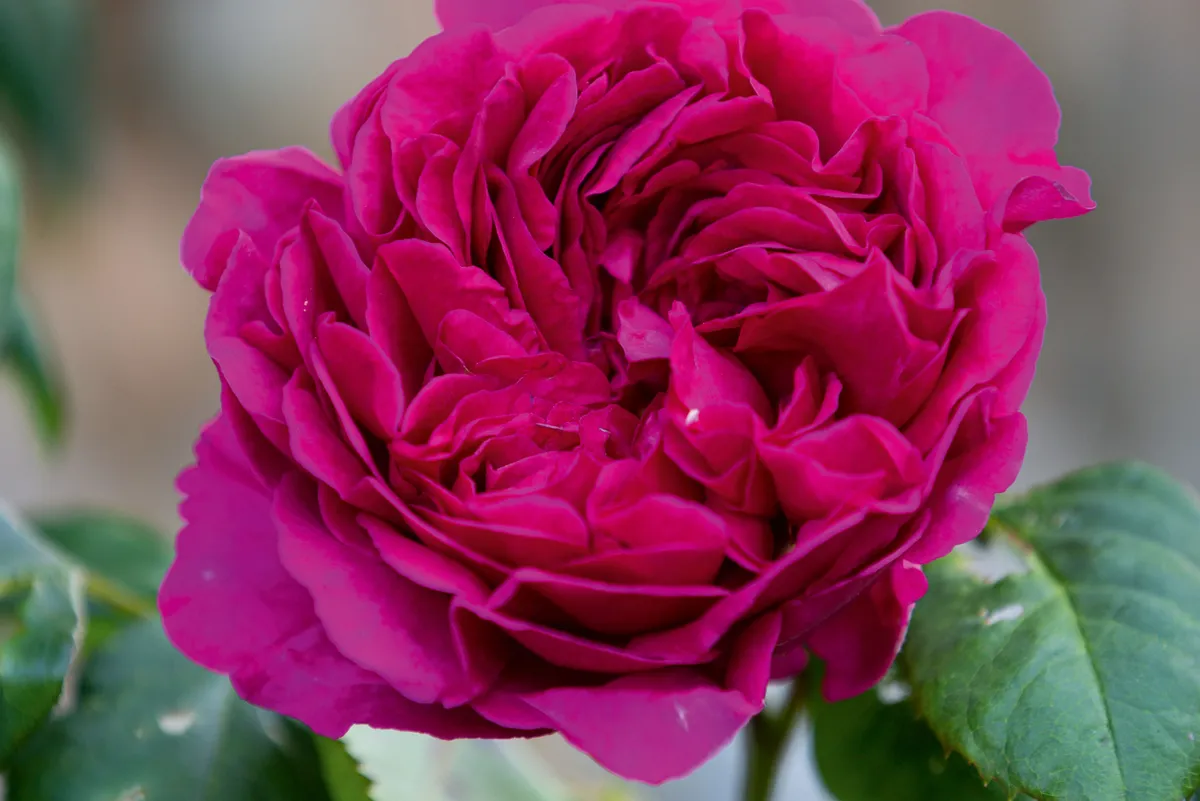
A repeat-flowering shrub rose or short climber with cupped, fully double, rich-magenta blooms and a strong, old rose fragrance. 1.8m.
Clematis ‘The President’
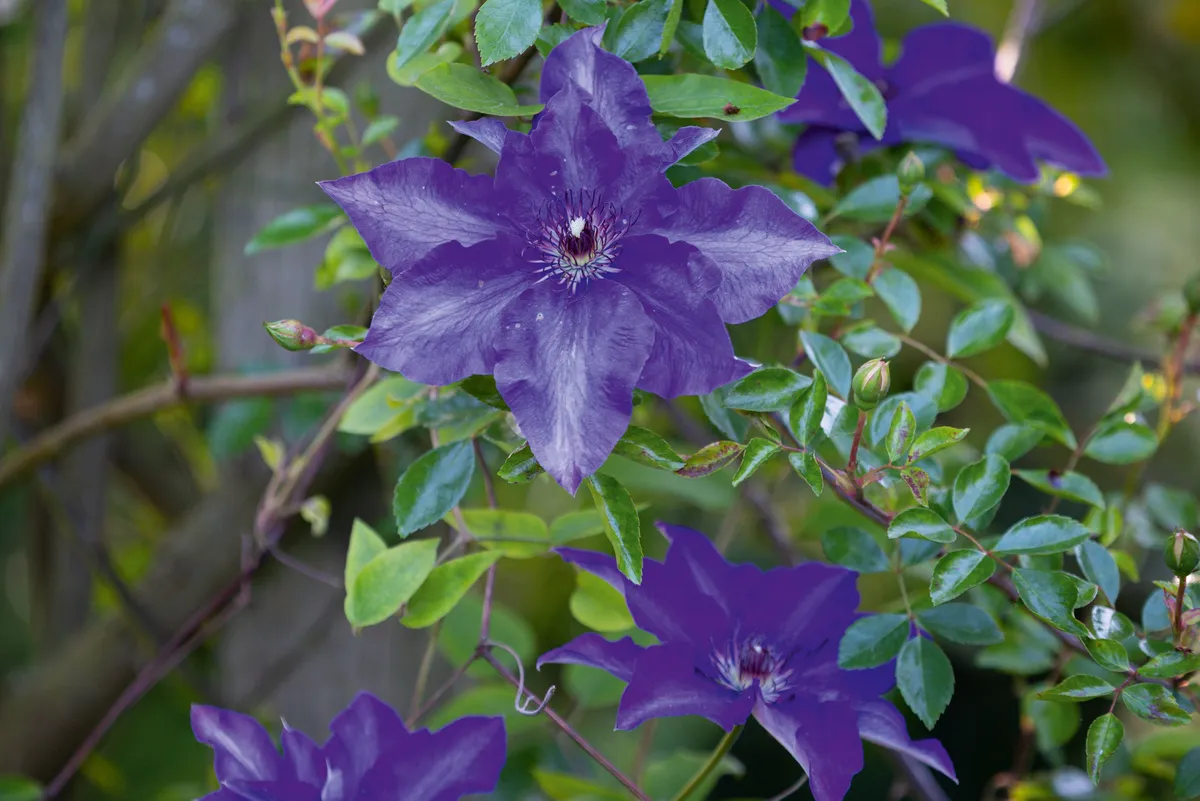
This free-flowering group two clematis has been popular since its introduction in the 19th century. Its large purple flowers appear from June to September and have pointed petals and red centres. 2.5m x 90cm. AGM.
Campanula persicifolia var. alba
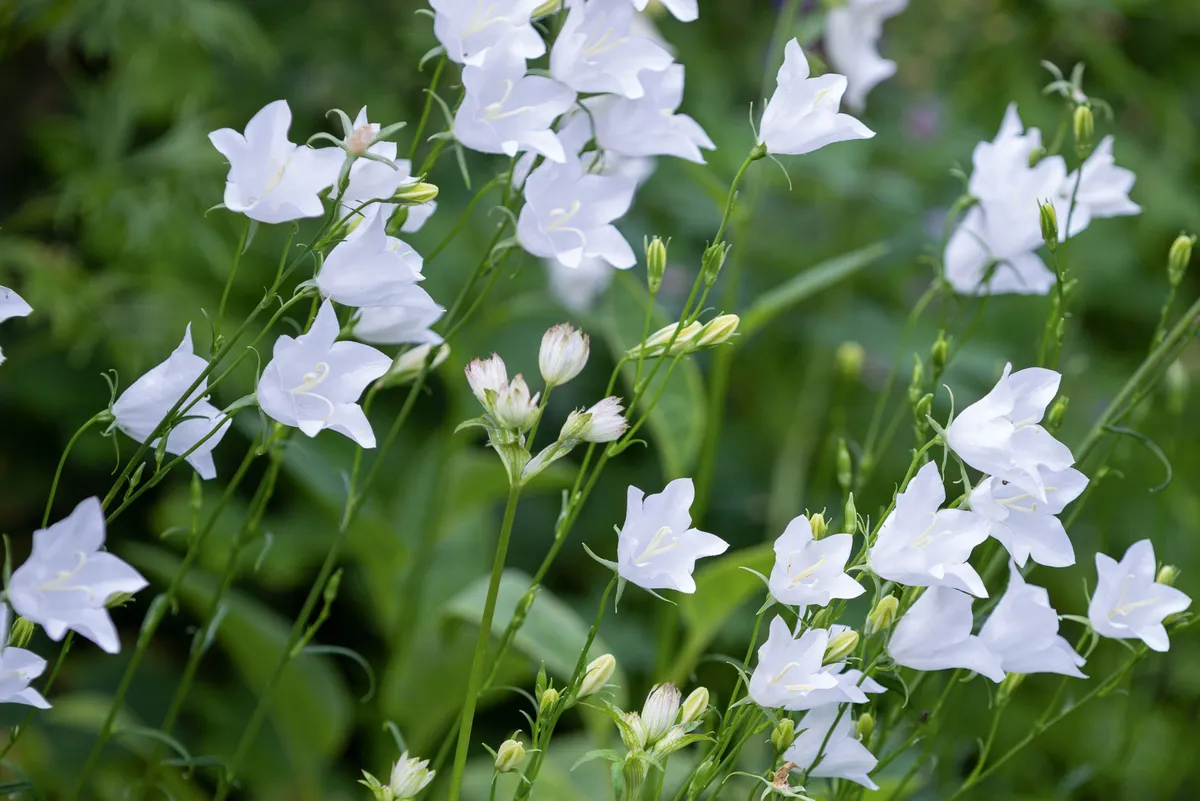
Breezy spires of delicate, bell-shaped, white flowers appear in midsummer. Will readily self-seed. 90cm x 30cm.
Allium hollandicum ‘Purple Sensation’

Balls of star-shaped flowers in vivid purple are held on spikes up to 1m tall. If the pretty seedheads are left this will enthusiastically self-seed. 1m x 1m.